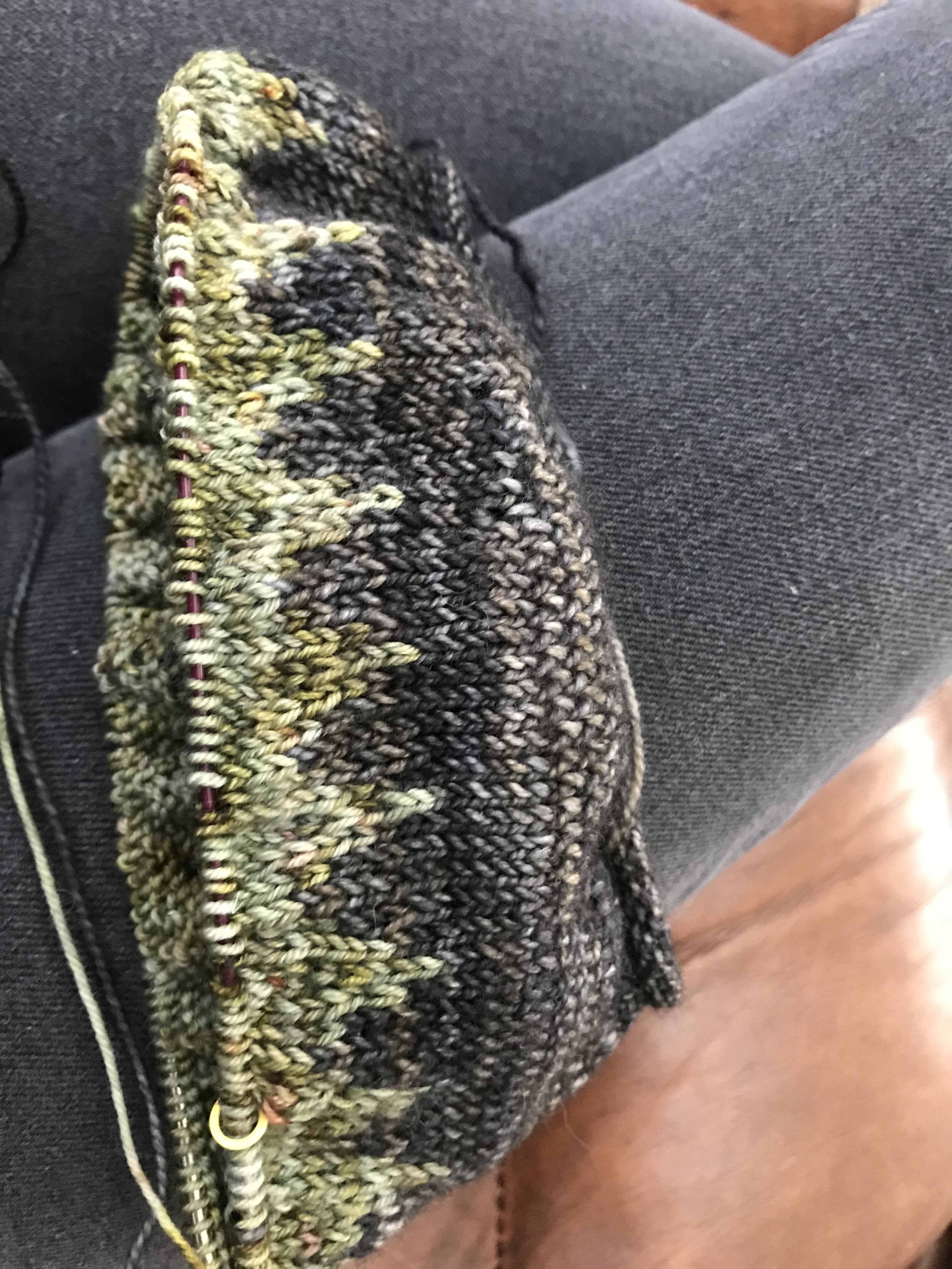So often I find that the projects that end up on the needles are the ones that I feel like my heart is bursting out of my chest to have. I know at this point that if I’m anything short of this ridiculously ecstatic state, the project will almost certainly never get finished.
Lucky for me, there is an endless number of beautiful things to knit, and amazingly talented people like Mara Catherine Bryner will come out with patterns like this Forest Grove shawl so I can continue to obsess over what’s possible with two sticks and yarn.
And obsess I did. Knotty Lamb (one of my favourite yarn stores) was cruel enough to post heaps of pictures for this pattern and their kits of Barnyard Knits’ yarn to make the shawl exactly like Mara Catherine Bryner’s, taunting me for weeks. I could have gotten angry at them, I could have written hate mail to Knotty Lamb, I could have used every social media platform I have a presence on to vent my malicious feelings, but instead I did one better. I ran home, bought the kit and checked the tracking number 5 times a day until it got here.
That will show them.
The rule I had for myself was that I had to finish Rock Creek before I could start Forest Grove, even though by the time I had the yarn I was having dreams of the completed creation, that I would so delightedly wear.
Once I started the shawl there was no stopping. Every spare second was spent working on it, and helping it grow into the lovely thing I had only seen it pictures and dreamed of.
This is also the first time I’ve ever used a kit for a pattern I was working on. Usually I’m eager to work with a colour palette that I thought up and arranged, but the original concept was so beautiful that I for once I didn’t want to deviate from it.
And I’m glad that I did so, these colours play so well together, and since they’re all from Barnyard Knits, they have all the right tones to meld together. I noticed in particular that the transitions between colours looked natural and smooth.
This is also obviously good planning and coordinating on Mara Catherine Bryner’s part, as each of these yarns have hints of every other yarn present so you do get this near seamless look in the pattern.
As I got lost in the love of these colours, soon the shawl was completely knit up, and just about as beautiful as I hoped it would be.
I think the only thing I don’t love is that I did my I-cord edging a wee bit too tightly. Which I plan to remedy in the future by allowing those side stitches to be looser, instead of pulling every stitch tight like I always do.
As for with this shawl, I plan to aggressively block it until it realizes how badly I want it to lay flat. I feel that with enough determination I will show it the error of its ways.
No matter how successful the blocking is though, I still love it and find it beautiful.
(And so does this lovely cat)
Until next time-
Stay sweet, stay crafty, and stay tuned.














































